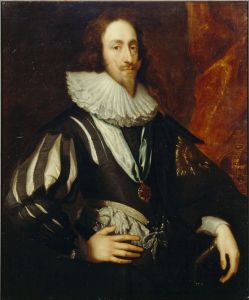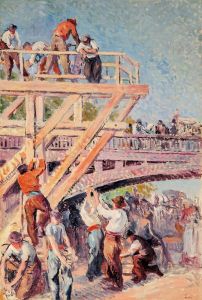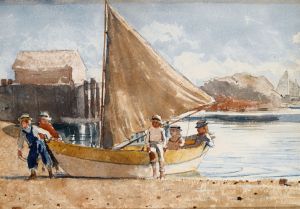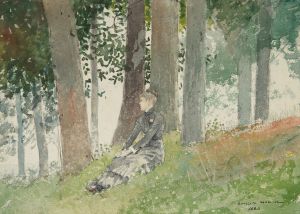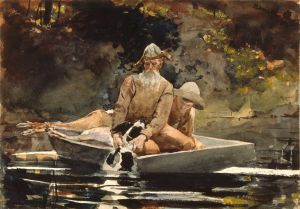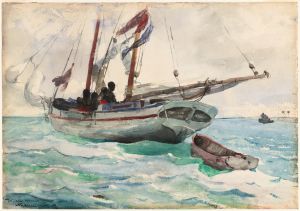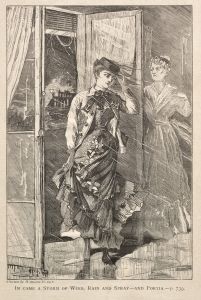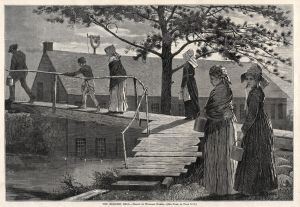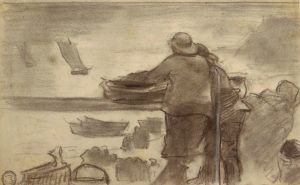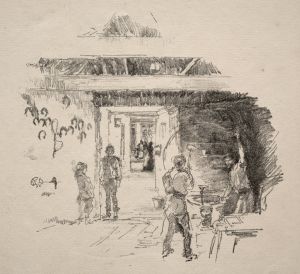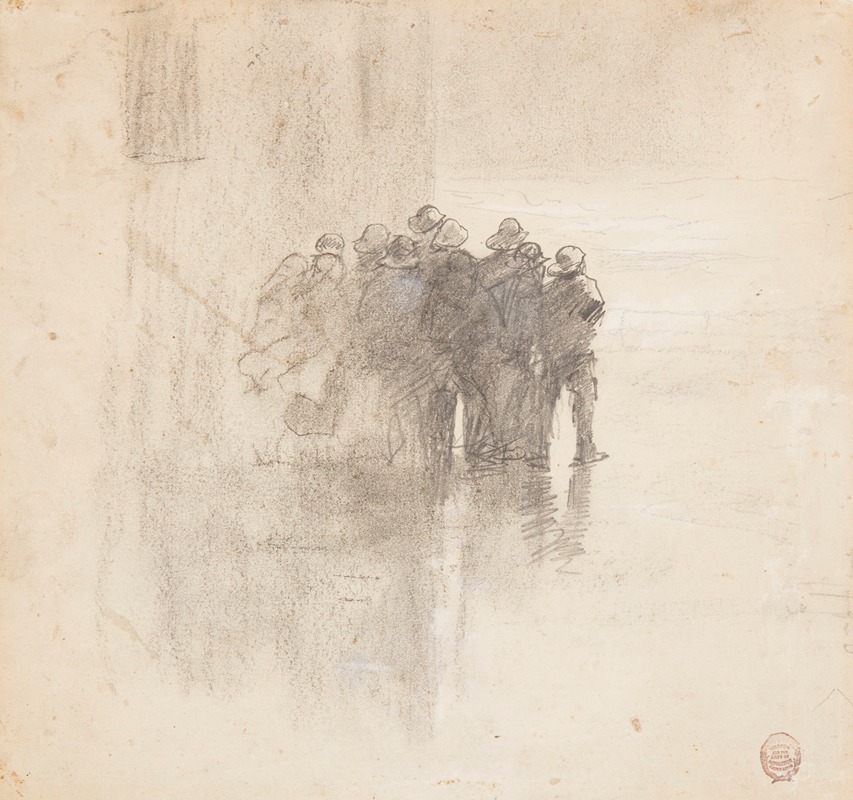
Fishermen in Oilskins, Cullercoats, England
A hand-painted replica of Winslow Homer’s masterpiece Fishermen in Oilskins, Cullercoats, England, meticulously crafted by professional artists to capture the true essence of the original. Each piece is created with museum-quality canvas and rare mineral pigments, carefully painted by experienced artists with delicate brushstrokes and rich, layered colors to perfectly recreate the texture of the original artwork. Unlike machine-printed reproductions, this hand-painted version brings the painting to life, infused with the artist’s emotions and skill in every stroke. Whether for personal collection or home decoration, it instantly elevates the artistic atmosphere of any space.
Winslow Homer, an American artist renowned for his marine subjects, painted "Fishermen in Oilskins, Cullercoats, England" during his stay in the coastal village of Cullercoats, located in the northeast of England. Homer resided in Cullercoats from 1881 to 1882, a period that significantly influenced his artistic development and thematic focus. This painting is one of the works that emerged from his time in the village, capturing the essence of the local fishing community and their daily lives.
Cullercoats was a small fishing village, and its inhabitants were primarily engaged in the fishing industry. The village's rugged coastline and the hardworking nature of its people provided Homer with a wealth of inspiration. The artist was particularly drawn to the resilience and stoicism of the fishermen and their families, themes that are evident in many of his works from this period.
"Fishermen in Oilskins, Cullercoats, England" depicts fishermen clad in oilskins, a type of waterproof clothing traditionally worn by those working at sea. The use of oilskins was common among fishermen to protect themselves from the harsh and wet conditions they often faced. Homer's attention to detail in portraying the fishermen's attire highlights his interest in accurately representing the lives and environment of the Cullercoats community.
Homer's time in Cullercoats marked a transition in his artistic style. Prior to his stay in England, he was known for his work as an illustrator and for his depictions of American life. However, the experience in Cullercoats allowed him to refine his technique and deepen his exploration of light, atmosphere, and human emotion. The paintings from this period are characterized by a more subdued color palette and a focus on the interplay between figures and their natural surroundings.
The painting is also notable for its composition and use of light. Homer skillfully captures the somber and often harsh realities of life by the sea, using light to emphasize the textures of the oilskins and the expressions of the fishermen. The work reflects a sense of realism and authenticity, qualities that Homer consistently sought to achieve in his art.
Homer's Cullercoats period was relatively brief but profoundly impactful. The works he produced during this time, including "Fishermen in Oilskins, Cullercoats, England," are considered pivotal in his career. They not only showcase his technical prowess but also his ability to convey the dignity and strength of ordinary people facing the challenges of their environment.
After returning to the United States, Homer continued to explore maritime themes, but the influence of his Cullercoats experience remained evident in his subsequent works. His paintings from this period are celebrated for their emotional depth and their ability to capture the universal human experience through the lens of a specific community.
"Fishermen in Oilskins, Cullercoats, England" stands as a testament to Winslow Homer's skill as an artist and his deep empathy for the subjects he portrayed. It remains an important work in understanding the evolution of his artistic vision and his contribution to the genre of marine art.






